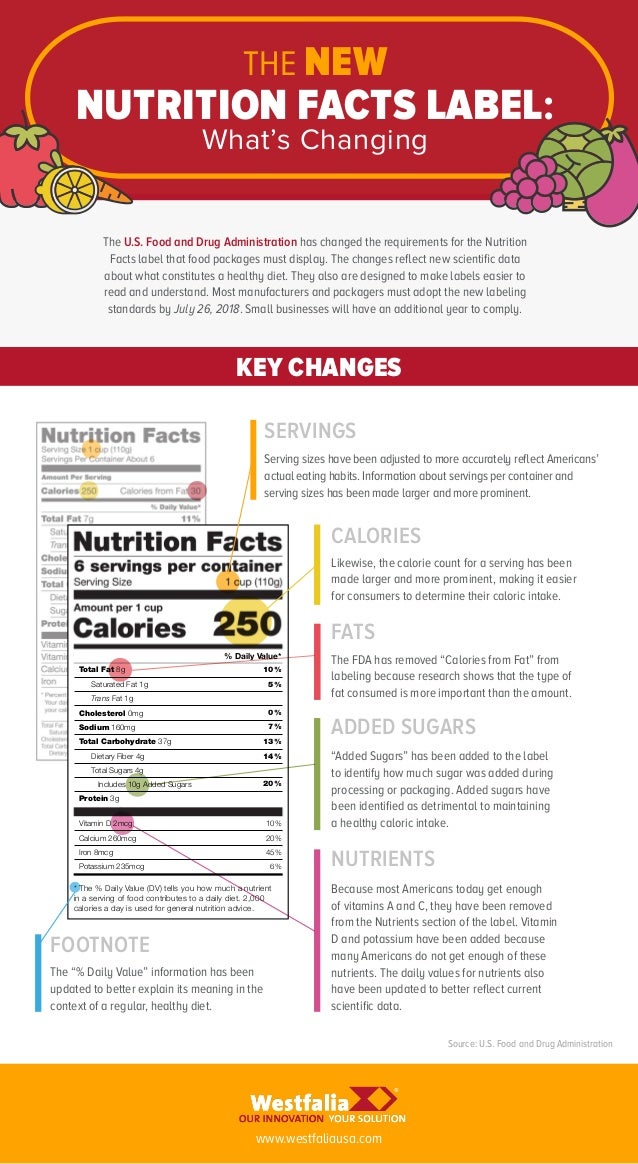Earlier this year, the Food and Drug Administration made significant changes to the Nutrition Facts Label in order to give consumers a better understanding of the foods they eat and how these foods contribute to their diet. These changes were the first to be made in nearly 20 years, and the following article will detail some of the most important of these changes.
To begin, one of the first bits of information you’ll find on every nutrition facts label, even before these changes, is the suggested serving size. Prior to the changes, however, the serving sizes of all food items were a bit unrealistic. Take your favorite bag of chips or soda for example. The old nutrition facts label would suggest that you consume both of these products in a ridiculous amount of servings, which isn’t a common way these particular products are consumed. Now, serving size has been bolded and updated to better represent the way people should be eating or drinking food products, in addition to total calorie count for the product being added for those who elect to disregard suggested serving sizes.
The next bit of information you’ll find on the new nutrition facts label has been made the easiest to see of all information on the label. Calorie count. This total is now printed largest compared to the other information. In addition to this change, the calories from fat unit has been removed from all labels. Rather than including this information, the FDA has opted to sharing the amount of statured and trans fats that are included in food products on their labels as it gives a better picture of what foods are actually healthy for consumers.
Finally, the daily value figures that were once relatively small compared to the rest of the label have been upsized and included for more than just common nutrients. This allows consumers the chance to dial back the amount of products they’re consuming that are high in sodium for example as the label now clearly shows the daily value of sodium per serving in food products they are deciding between.
All of these changes, alongside other minor additions such as the need to include other nutrients such as the Vitamin D and Potassium, are all made in hopes that consumers will make more health-conscious decisions in what they purchase and prepare for themselves as a healthier diet goes a long way.
Author bio: John Hinchey is VP of Sales for Westfalia Technologies, Inc., a leading provider of logistics solutions for plants, warehouses and distribution centers. He has more than 20 years of experience in manufacturing and warehouse automation.













Comments